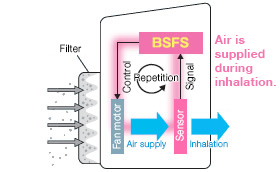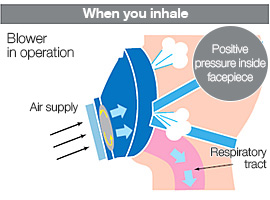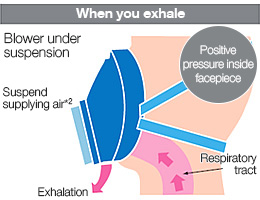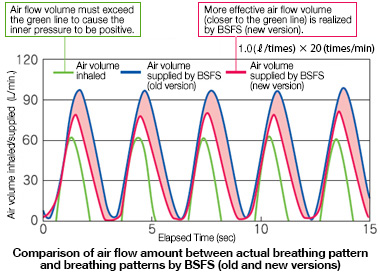- How BSFS works
Thus, a “necessary and sufficient” volume of air is supplied to meet the wearer’s comfortable breathing.

- Benefits of BSFS
High Safety
As the air pressure inside the facepiece is kept consistently positive, chances of inward leakage of particulates are very slim.

When you inhale, air inside the facepiece is sucked, creating a slight negative pressure in it. The blowing unit sends air to prevent the inner pressure from becoming negative.
(If there is a gap between the face and the facepiece, increased pressure causes outward leakage.*1)
*1: An amount of air volume leaked outward depends on how big a gap is.
As exhalation does not cause a decrease in the inner pressure, the blower unit suspends sending air into the facepiece. This can reduce consumption in filter elements and electricity.
*2: Suspension of the blower unit does not mean complete stop of air flow.
High Comfort
An optimum amount of air sent in synchronization with the wearer’s breathing pattern removes the burden of wearing a respirator. It also reduces the burden of the worker’s operation and suppresses a choking sensation in an extremely hot workplace.
Low Cost Operation by reducing air flow loss
Simply sending a constant and large amount of air flow, the conventional PAPR without having “BSFS” system, may cause particulates to be accumulated more than necessary on the filter, thus shortening its service life. The battery power consumption also increases.
By reducing air flow loss to the utmost limit, BSFS can reduce filter use and battery power consumption.

